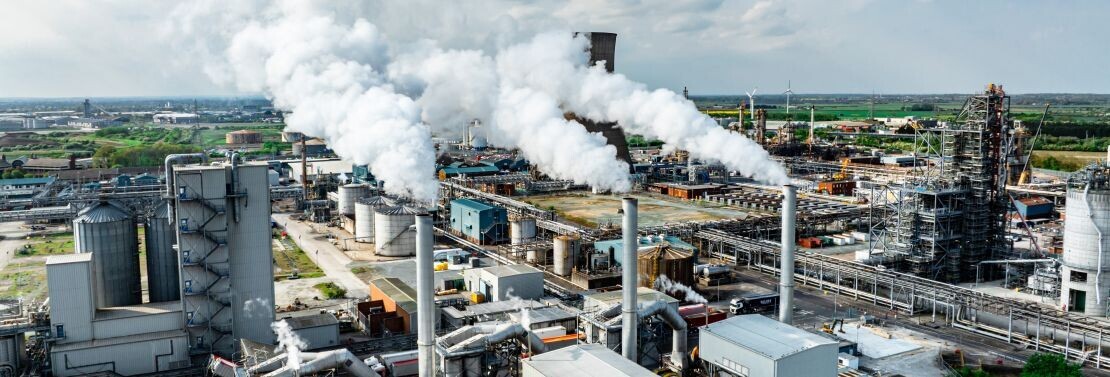
Dossiers - Climate and energy policy
CCUS: a key technology for achieving the net-zero target
To achieve the net-zero targets by 2050, innovative, sustainable solutions are needed. One example of this is carbon capture, utilisation and storage (CCUS), which could make a significant contribution to achieving the climate targets. For CCUS to be implemented, a long-term regulatory framework is essential.
22.04.2025
Achieving net-zero targets by 2050 requires innovative technologies and sustainable solutions. A key technology in this context is carbon capture, utilization and storage (CCUS). This technology enables the capture, use or safe storage of CO₂ emissions from industrial processes. Particularly in the chemical-pharmaceutical industry, where emissions cannot be completely avoided due to the complex production processes and strict regulatory requirements, CCUS can make a decisive contribution to reducing these residual emissions.
Recent studies in Switzerland and internationally underscore the great potential of CCUS. They show that this technology can not only make a significant contribution to reducing difficult-to-avoid industrial emissions, but also offers considerable economic opportunities. Particularly noteworthy is the innovative use of captured CO₂ – for example, as a raw material for chemical processes or building materials. These applications open up new business models and create new prospects for a low-CO₂ economy.
Prerequisites for the implementation of CCUS
A recently published study by BAK Economics and the German Energy Agency (dena), commissioned by scienceindustries, analyzes the investment needs and financing options for CCUS technologies in hazardous waste incinerators (SAVA) in the chemical-pharmaceutical industry. The results predict abatement costs between 381 and 739 CHF per tonne of CO₂ in 2030. This results in significant financing gaps between expected emissions trading system (ETS) prices and actual abatement costs – a major challenge that is, however, expected to decrease by 2050 when the necessary infrastructure for CO₂ transport and storage is further developed.
Successful implementation of CCUS depends not only on efficient CO₂ capture technologies, but also on the development of effective transport and storage solutions. Countries such as Norway and the Netherlands have already implemented large-scale storage projects. The development of a corresponding infrastructure – whether through national storage facilities or connection to existing European networks – will be crucial to making the technology economically viable and sustainable in the long term.
Implementation of CCUS: a call to politicians
A stable, long-term regulatory framework is essential for the successful implementation of CCUS. Such a framework promotes investment, offers companies planning security and supports the industrial implementation of the technology. The timing for a more intensive examination of CCUS could hardly be better: national legislation on CO₂ capture, transport and storage is currently under political discussion. The motion 24.4256, which is expected to lead to new legislation, creates a clear and supportive legal structure. This could significantly accelerate technology transfer and the practical implementation of CCUS.
scienceindustries is actively involved in helping to shape the political and regulatory framework for achieving climate targets. Through their research and development, our member companies are making a significant contribution to promoting innovations that advance the net-zero targets in Switzerland and worldwide.
|
CO₂ management as a central component of the net-zero strategy CO₂ management encompasses various technologies for capturing, storing, transporting and utilizing CO₂ emissions from industrial plants, as well as for extracting CO₂ from the atmosphere. Three main technology paths can be distinguished:
An efficient CO₂ transport infrastructure is essential for all three technologies and forms the basis for a functioning CO₂ market. If captured CO₂ is not used directly at the point of origin, it must be transported for industrial applications (e.g. in building materials, synthetic fuels, plastics or chemicals) or for permanent storage. CO₂ can be transported via pipelines, by ship or by road and rail. With targeted infrastructure expansion, a clear regulatory framework and technological innovation, CCUS can contribute to a sustainable and economically viable solution for achieving net-zero targets. |
